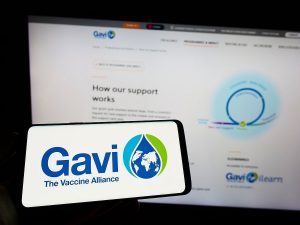The COVID-19 pandemic is shaking up America’s approach to addiction treatment, but the fallout hasn’t been all bad, experts say.
In-person support meetings either aren’t happening or have been severely curtailed, and addiction centers are facing financial ruin because folks are too afraid of the coronavirus to seek treatment.
But paradoxically, people might have better access to addiction treatment than ever before, thanks to the shift to telemedicine across all health care.
“Ultimately, I think this will rebound, but not like before,” Fred Muench, president of the Partnership to End Addiction, said of the future of addiction treatment.
Muench sees telemedicine as the way to ensure the financial survival of the U.S. network of addiction providers.
“We will see the greatest changes in outpatient care, which will truly be a hybrid,” Muench said. “In the future, you will not have to be a telehealth provider to treat digitally — all treatment will have a telehealth component. If not, it will cease to exist. Providers cannot afford to wait to integrate telehealth.”
COVID-19 lockdowns forced organizations like Alcoholics Anonymous to shift to web video meetings or teleconferences for their support groups.
The pandemic also caused many treatment centers to cut back on their services.
More than nine out of 10 addiction centers said they cut back their programs during the lockdown, furloughing or laying off employees, according to an April survey of the National Council for Behavioral Health’s 3,400 members. Two-thirds of the centers said they weren’t likely to survive longer than three months given their cash on hand.
“Unfortunately, it’s a self-perpetuating cycle,” Chuck Ingoglia, CEO of the council, told NPR. “You have fewer staff or fewer programs, which means you can treat fewer people,” he said, “which then has long-term impact on your revenue.”
Telemedicine steps up
In response, addiction centers have followed the lead of most other health care services by shifting to telemedicine, treating substance use disorders over the phone or via the internet.
The federal government relaxed rules related to reimbursing medical services provided via telehealth during the lockdown, meaning that addiction service providers can more reliably depend on being paid for remote treatment.
“We hear anecdotally the states and practitioners and providers are seeing an increase in the number of patients they’re actually able to see and treat,” thanks to the shift to telemedicine, said Beth Connolly, project director of the Pew Charitable Trusts’ Substance Use Prevention and Treatment Initiative. “Help can be a phone call away.”
In many cases, telemedicine is simply the only way people now can get help for their substance use disorder, said Dr. Lewei Lin, an addiction psychiatrist with the Ann Arbor VA and the University of Michigan.
“For some patients, if you aren’t doing telehealth you won’t be able to get treatment,” Lin said. “It might be the only viable option, or the most viable option. We don’t know if more people are getting care. We just know care has switched over or needs to switch over to virtual care.”
The switch to telemedicine can be disconcerting, particularly for people who’ve been in treatment for some time, Muench said.
“You can dissociate on the phone in a way that you can’t in person,” Muench said. “For example, you can be cleaning the house or checking your work email. These distractions make it less likely that someone will really dig in and focus. This is most important for peer connection more than anything.”
But telemedicine has several advantages that could make it easier for people to get addiction treatment, Lin said.
“Addiction care is very intense. With addiction care, typically we were having our patients come in maybe weekly at first, and every few weeks or every month later on,” Lin said. “We were asking for quite a lot of very intense treatment that was typically occurring in-person.”
The shift to telemedicine has made it easier for patients to keep up with that rigorous schedule, Lin and Connolly said.
“People do not have to worry about accessing child care, accessing transportation to get to treatment,” Connolly said. “People can take advantage of treatment where they are, when they need it.”
‘Providing a door’
People also might be more willing to give addiction treatment a try “because the distance reduces their fear and anxiety stemming from stigma,” Muench added. “Online meetings provide a door — an opening to try things out — where people don’t have to show their faces,” he explained.
“That in turn leads to an increase in sharing and sense of intimacy,” Muench continued. “People share much more during digital treatment than they do in person. Some topics they disclose include drug use, sexual behavior and psychiatric symptoms. Regardless of stigma, digital communications increase disclosure.”
Lin and Connolly suggest that telehealth should continue to play a major role in addiction treatment even after the pandemic wanes.
“This need still persists absent COVID-19. People need access to treatment,” Connolly said. “I’d like to hope the federal government will consider making [the current telemedicine reimbursement rules] permanent so we can keep this increased access in place.”
There also needs to be more research to ensure that remote addiction treatment is effective, Lin added.
“Telemedicine has been studied tons in other areas of medicine, but it hasn’t been studied much in addiction treatment,” Lin said. “In general, telemedicine seems to be just as effective as traditional in-person care.”
Improving remote care
In a recent JAMA Psychiatry editorial, Lin and two colleagues argued for three key changes to improve remote addiction treatment:
- Development of treatment guidelines that take into account both in-person and telemedicine care, including guidance for app-based drug screening and progress tracking.
- Increased availability of the addiction drug buprenorphine through telemedicine providers.
- More online help for people whose substance use disorders are compounded by other mental health conditions, as well as the anxiety and stress caused by the pandemic.
Muench expressed some concern regarding relaxed prescribing rules for telehealth-based addiction treatment.
“Such a move will improve access without a doubt. It will save lives,” Muench said. “However, we also have to go in eyes wide open. We know it will increase diversion and first-time use based on availability. We have to have the right safeguards in place.”
Regardless of such concerns, addiction treatment must change with the times, Muench said.
“Ultimately, we need to be flexible. We need to embrace online self-help groups and empower people to take action in their own lives. Addiction providers can’t rely on old models of care. They must meet people where they are — and often that does not initially include in-person meetings,” Muench said.
“Telehealth makes it easier to get care. Easier to join a group. Easier to share something that may be more personal, easier to stay connected over time. The goal for treatment, in general, is to make it easy for people to get help when changing is so hard,” Muench concluded.
More information
The U.S. National Institute on Drug Abuse has more about substance use treatment during the COVID-19 pandemic.
Source: HealthDay
Copyright © 2025 HealthDay. All rights reserved.

















